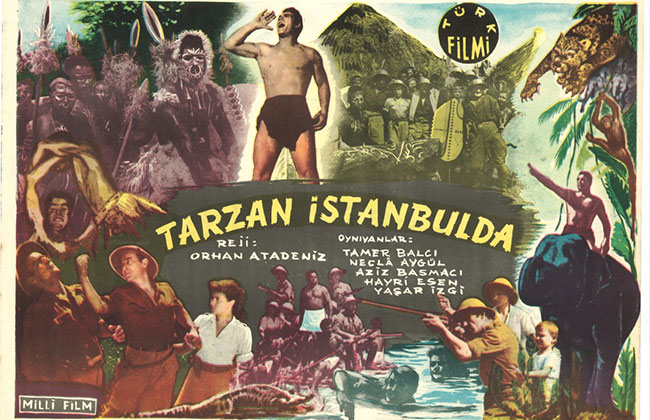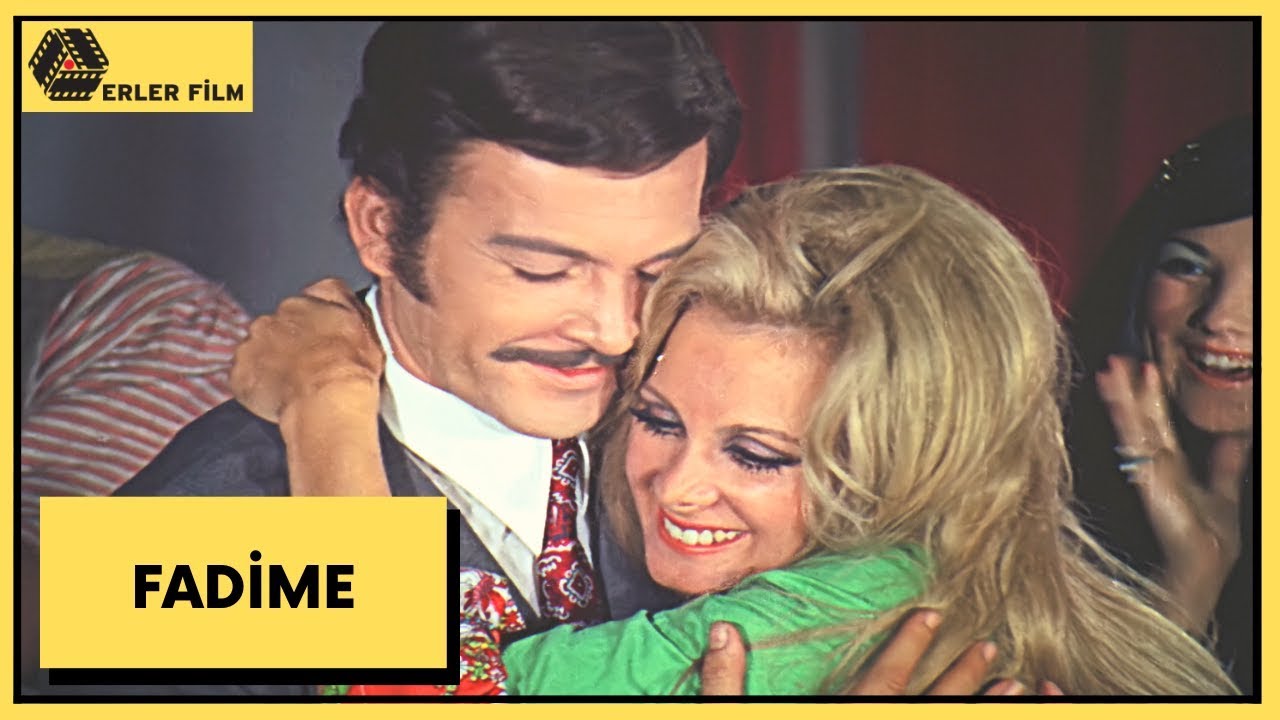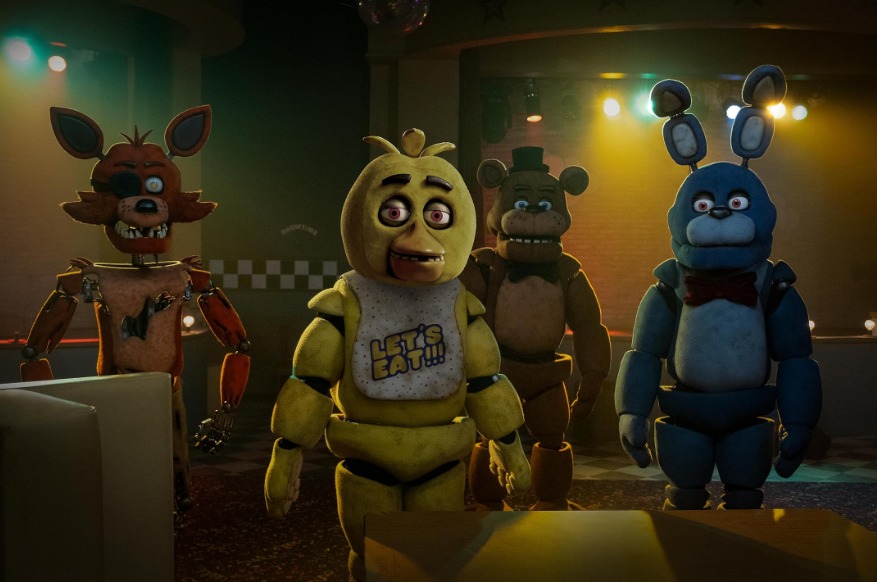Before the dvd review you can watch the tv rip without subtitles

The producers’ desire to create a quality product and their willingness to pay close attention to continuity details (where possible) appears to have paid dividends here. It seems that the film’s crew shot some original exotic wildlife footage at the zoo in Izmir during the film’s pre-production phase. This material was then augmented by odd bits of pre-existing stock footage from documentaries and earlier Hollywood films. Kunt Tulgar recalls that the film’s technical crew then carefully selected the wildlife footage that they wanted to use before travelling to the show’s filming locations in the Belgrad Forest. The employment of this careful pre-selection process is fairly self-evident in the finished film: the eyeline matches and cutaways that are used to connect the show’s actors to the wild animals that they are supposedly in close proximity to work really well. Furthermore, the various shots that make up these mix and match montages tend to feature onscreen activities that share a common directional flow. As such, the editing together of footage taken from disparate sources has been accomplished in a remarkably smooth and convincing way here.
But while there is little cause for complaint about the film’s technical merits, some Tarzan fans might argue that the show is a little Tarzan-lite initially. If we discount the footage that the front credits play over and the effective flashback sequence that shows the young Tarzan (Kunt Tulgar) fleeing from marauding natives, Tarzan’s first appearance proper is at the 30-minute mark. Here we see him riding the elephant Timba and messing around with Chitah the chimpanzee. Tarzan soon becomes aware of Tekin’s party and he chooses to quietly observe them from a distance. At the 50-minute mark, Tarzan finally has to spring into action when a lion invades the treasure hunters’ camp. After that there’s plenty of generic and pretty well executed Tarzan-related shenanigans: Tarzan fighting a crocodile, Tarzan saving and then kidnapping Netzla, Tarzan taking on a whole tribe of natives in his attempts to rescue the captured treasure hunters, etc. Incidentally, Tarzan’s absence from the earlier portions of the show neatly allows for a bit of character development amongst the treasure hunters. We learn that Tevfik is in love with Netzla but the feeling isn’t mutual. Instead a romance appears to be blossoming between Netzla and Tekin.
Furthermore, Tarzan’s initial absence means that the treasure hunters have to resourcefully deal with dangerous situations on their own. There are a number of animal attacks (lions, rhinos, crocodiles, etc) and a severe storm to be dealt with. And the first attack by the unfriendly natives is real edge of the seat stuff. Here the treasure hunters are forced to scramble across a river on an overloaded raft before trying to hold their attackers off with gunfire. When this approach doesn’t work they resort to trying to outrun their determined assailants since they know that the natives are afraid to pass beyond the base of Death Mountain. The unfriendly natives return for the show’s frenetic finale, which sees the treasure hunters finally overrun and captured by their assailants. It’s all pretty tense and violent stuff but there’s plenty of fun to be had here too: aerial shots of the plane trip to Africa, Tarzan and Netzla trying to overcome their communication difficulties, Timba and Chitah trying to revive a wounded Tarzan, etc.
 As you would expect from a film of this age, contemporaneous colonial attitudes are in evidence on a number of occasions. The Africa seen here is basically a huge playground that exists for the amusement of well-heeled European hunters. Kundo is a bitter colonialist who feels that it’s his right to make some serious money out of his time spent in Africa. Whenever danger is present, the friendly African porters are invariably portrayed as being nervous and cowardly types. Aziz, who is a pretty annoying jackass-type, serves to provide the show’s comic relief moments with his crazed and exaggerated boasts about his prowess as a hunter. But Aziz also seeks out laughs by being patronising to his porters and he regularly takes it upon himself to try and make them look foolish. Interestingly, Netzla actually reprimands Aziz for his childish behaviour when she catches him trying to bamboozle a couple of the porters. The show’s unfriendly natives are mostly portrayed as being superstitious and aggressive savages.
As you would expect from a film of this age, contemporaneous colonial attitudes are in evidence on a number of occasions. The Africa seen here is basically a huge playground that exists for the amusement of well-heeled European hunters. Kundo is a bitter colonialist who feels that it’s his right to make some serious money out of his time spent in Africa. Whenever danger is present, the friendly African porters are invariably portrayed as being nervous and cowardly types. Aziz, who is a pretty annoying jackass-type, serves to provide the show’s comic relief moments with his crazed and exaggerated boasts about his prowess as a hunter. But Aziz also seeks out laughs by being patronising to his porters and he regularly takes it upon himself to try and make them look foolish. Interestingly, Netzla actually reprimands Aziz for his childish behaviour when she catches him trying to bamboozle a couple of the porters. The show’s unfriendly natives are mostly portrayed as being superstitious and aggressive savages.
Orhan Atadeniz wrote and directed an engaging and tightly scripted show here that cleverly includes just about everything that a good Tarzan/jungle adventure flick should. But Sabahattin Tulgar’s sure-handed cinematography remains the show’s most important technical element. Solid, logical and consistent in its execution, Tulgar employs some interesting camera angles and draws upon a pleasing selection of shot sizes when covering most scenes. The acting on display here is of an equally enjoyable quality too. The film’s dramatic soundtrack score is presumably made up of cues borrowed from earlier Hollywood films but most of the music used here suits the demands of the onscreen action well. Thoroughly engrossing, exciting and entertaining, Tarzan Istanbul’da is a surprisingly good little film. As such this fast-paced and action-packed show is sure to please fans of both the Tarzan franchise and the jungle adventure genre in general.
 Given the film’s age and obscurity (and the seemingly precarious nature of film preservation in Turkey), the picture quality here is pretty good but it does fluctuate somewhat: some sequences are in virtually pristine condition while others suffer from scratches, etc. Similarly, contrast levels can be seen to alter sometimes when a switch is made between the footage that was shot specifically for the film and the pre-existing stock footage. And a couple of sequences play a little on the soft side. The show’s sound quality is not quite as good as the picture quality but it is serviceable. By and large, this DVD represents a good quality presentation of a film that was previously thought to have been lost forever.
Given the film’s age and obscurity (and the seemingly precarious nature of film preservation in Turkey), the picture quality here is pretty good but it does fluctuate somewhat: some sequences are in virtually pristine condition while others suffer from scratches, etc. Similarly, contrast levels can be seen to alter sometimes when a switch is made between the footage that was shot specifically for the film and the pre-existing stock footage. And a couple of sequences play a little on the soft side. The show’s sound quality is not quite as good as the picture quality but it is serviceable. By and large, this DVD represents a good quality presentation of a film that was previously thought to have been lost forever.
Amongst the disc’s extra features, which are all English language friendly, is an in-depth interview with Kunt Tulgar, who is the son of producer/cinematographer Sabahattin Tulgar. Kunt played Tarzan as a child in Tarzan Istanbul’da but years later he was responsible for directing a budget-constrained but well-intentioned and supremely entertaining version of Superman entitled Supermen Donuyor (1979). The interview included here is taken from the same sessions that produced the Tulgar interview that appears on Onar’s DVD release of that film (see the Turkish Superman Double Bill disc that teams Supermen Donuyor with Tunc Basaran’s Demir Yumruk Devler Geliyor (1973)).
Tarzan Istanbul’da
Onar Films
1952 / B&W / 1.33:1 flat / 92 m. / Tarzan in Istanbul
Starring Tamer Balci, Hayri Esen, Necla Aygul, Cemil Demirel, Aziz Basmaci, Ismail Kara, Kunt Tulgar, Yasar Izgi
Cinematography Sabahattin Tulgar
Film Editor Yilmaz Atadeniz
Written by Orhan Atadeniz (based upon the characters created by Edgar Rice Burroughs)
Produced by Sabahattin Tulgar
Directed by Orhan Atadeniz
Reviewed by Lee Broughton
Source: http://www.dvdtalk.com/dvdsavant/s3084lee.html














